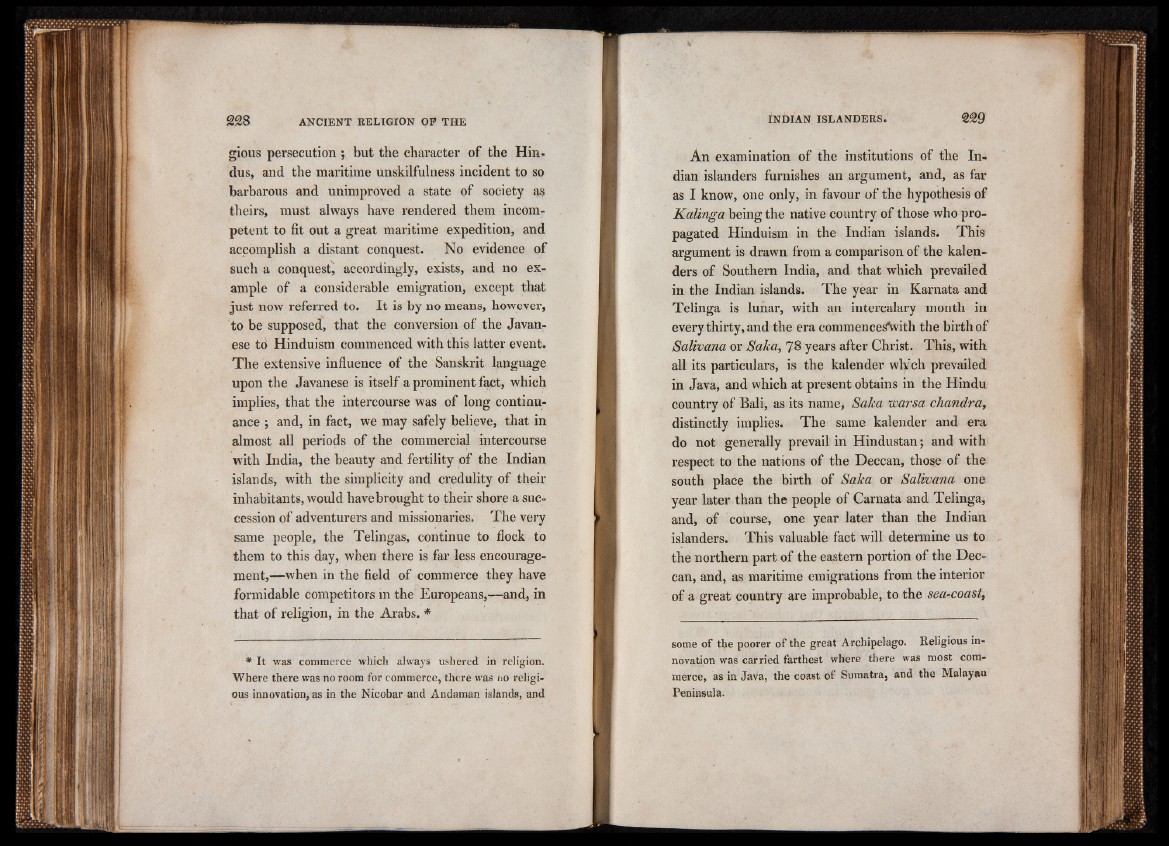
gious persecution ; but the character of the Hindus,
and the maritime unskilfulness incident to so
barbarous and unimproved a state of society as
theirs, must always have rendered them incompetent
to fit out a great maritime expedition, and
accomplish a distant conquest. No evidence of
such a conquest^ accordingly, exists, and no example
of a considerable emigration, except that
just now referred to. It is by no means, however,
to be supposed, that the conversion of the Javanese
td Hinduism commenced with this latter event.
The extensive influence of the Sanskrit language
upon the Javanese is itself a prominent fact, which
implies, that the intercourse was of long continuance
; and, in fact, we may safely believe, that in
almost all periods of the commercial intercourse
with India, the beauty and fertility of the Indian
islands, with the simplicity and credulity of their
inhabitants, would have brought to their shore a succession
of adventurers and missionaries. The very
same people, the Telingas, continue to flock to
them to this day, when there is far less encouragement,—
when in the field of commerce they have
formidable competitors m the Europeans,—and, in
that of religion, in the Arabs. *
* It was commerce which always ushered in religion.
Where there was no room for commerce, there was no religious
innovation, as in the Nicobar and Andaman islands, and
An examination of the institutions of the Indian
islanders furnishes an argument, and, as far
as I know, one only, in favour of the hypothesis of
Kalinga being the native country of those who propagated
Hinduism in the Indian islands. This
argument is drawn from a comparison of the kaleii-
ders of Southern India, and that which prevailed
in the Indian islands. The year in Karnata and
Telinga is lunar, with an intercalary month in
every thirty, and the era commenceS\vith the birth of
Salivana or Saka, 78 years after Christ. This, with
all its particulars, is the kalender which prevailed
in Java, and which at present obtains in the Hindu
country of Bali, as its name, Saka warsa chandra,
distinctly implies. The same kalender and era
do not generally prevail in Hindustan; and with
respect to the nations of the Deccan, those of the
south place the birth of Saka or Salivana one
year later than the people of Carnata and Telinga,
and, of course, one year later than the Indian
islanders. This valuable fact will determine us to
the northern part of the eastern portion of the Deccan,
and, as maritime emigrations from the interior
of a great country are improbable, to the sea-coast,
some of the poorer of the great Archipelago. Religious innovation
was carried farthest where there was most commerce,
as in Java, the coast of Sumatra, and the Malayan
Peninsula.